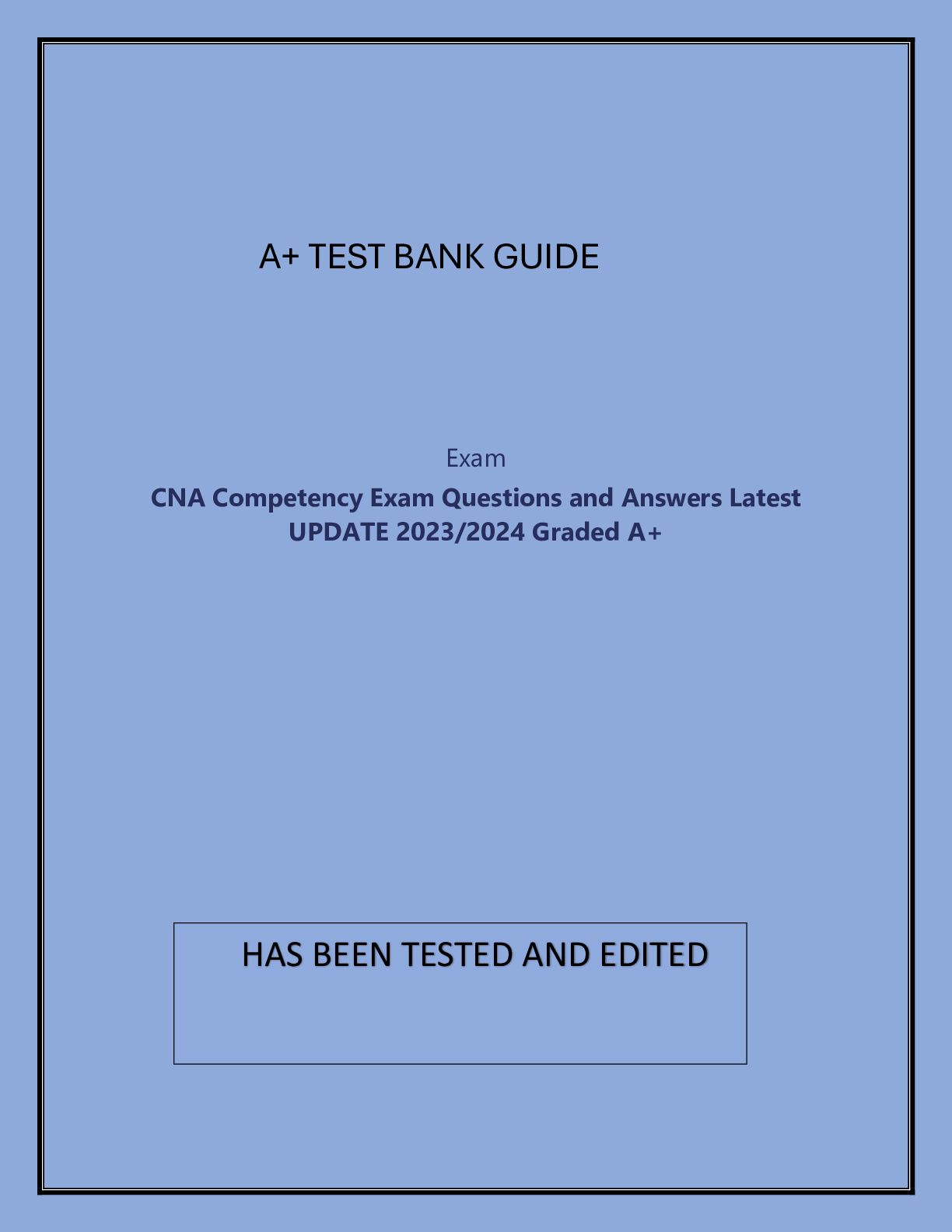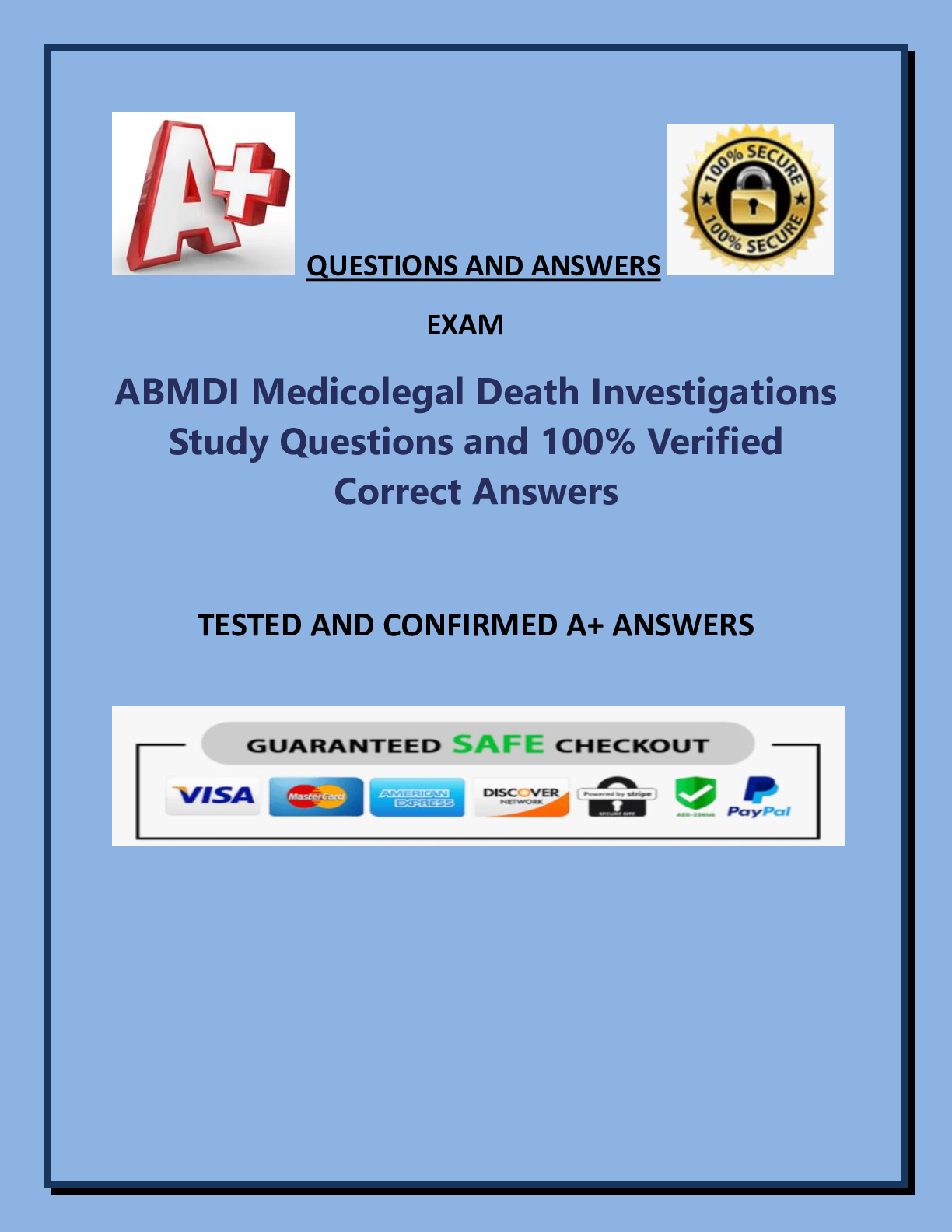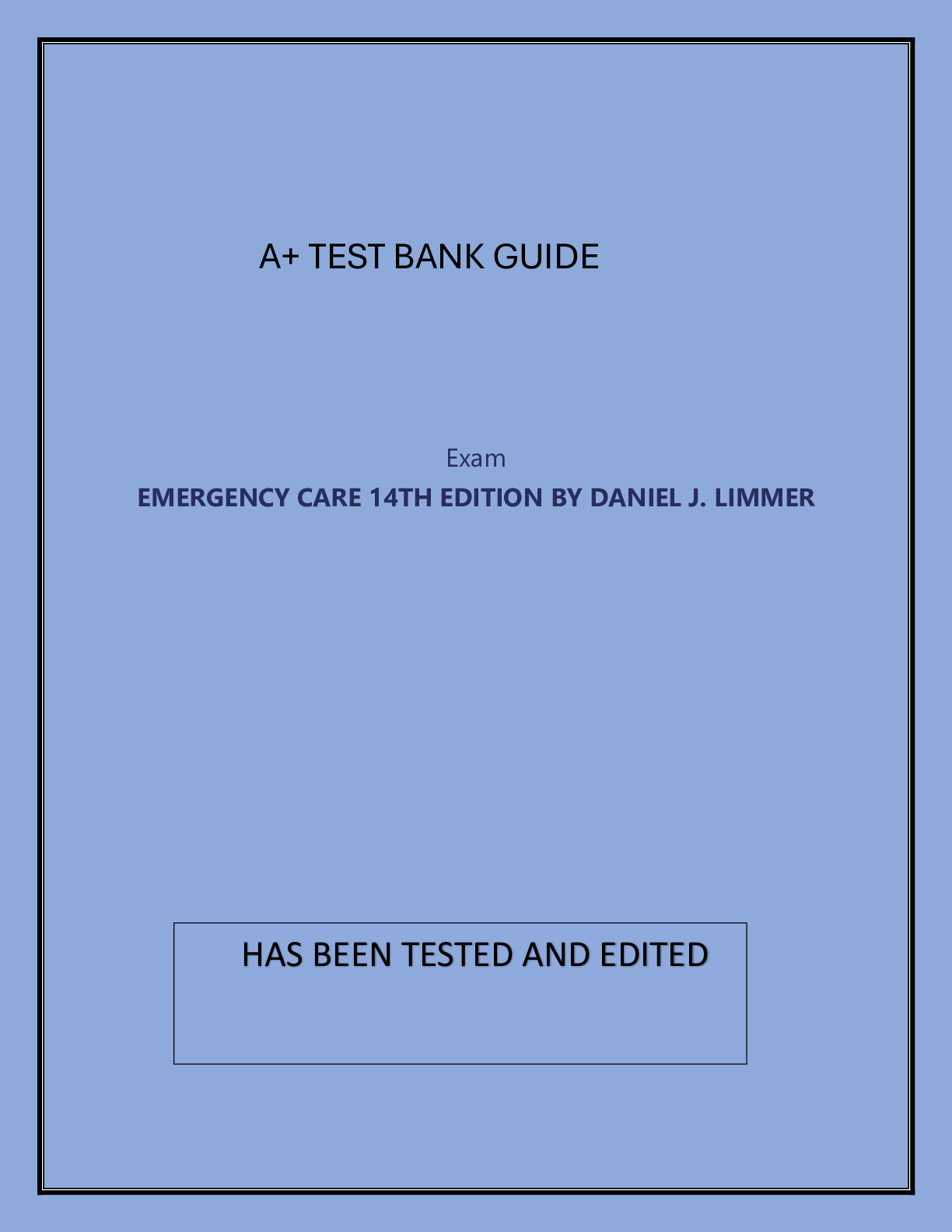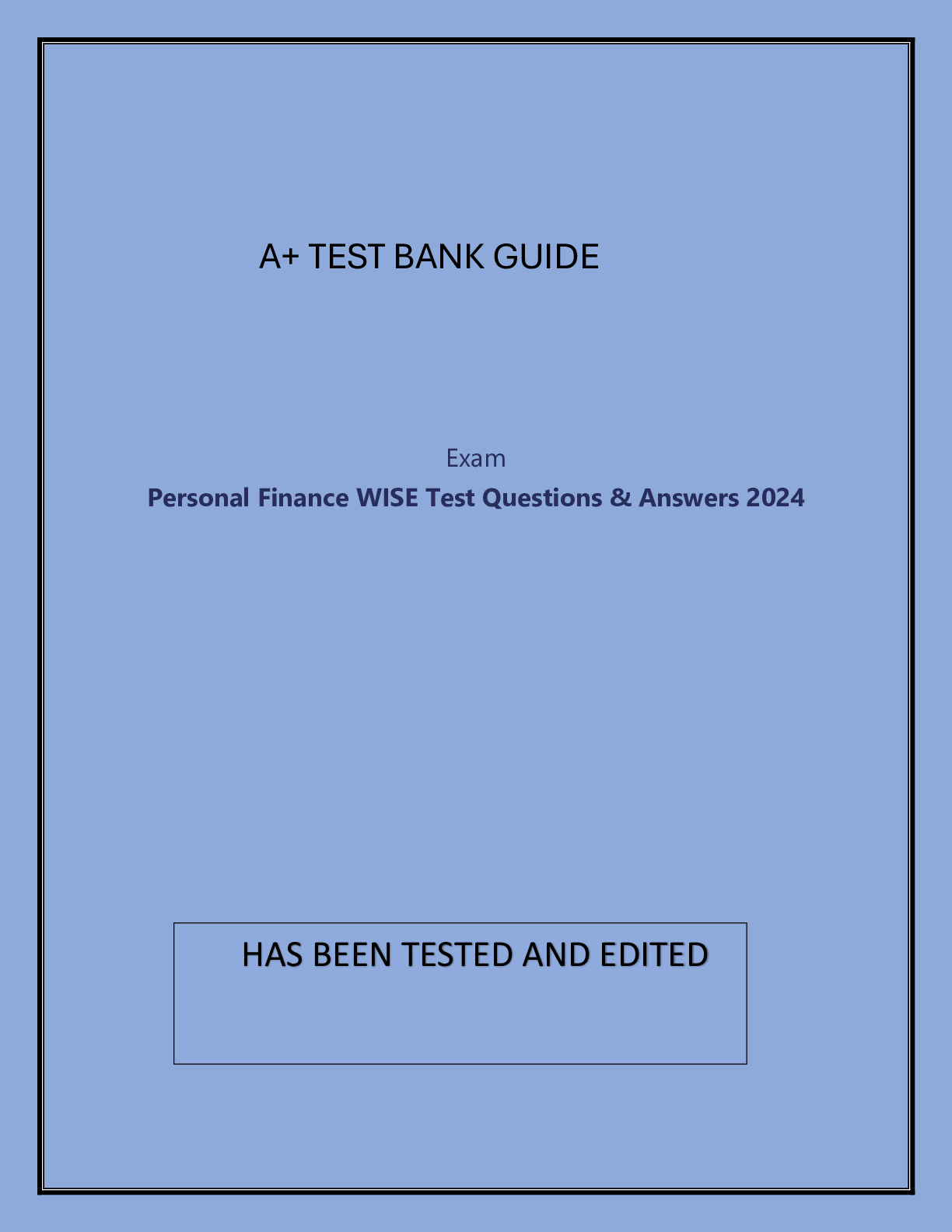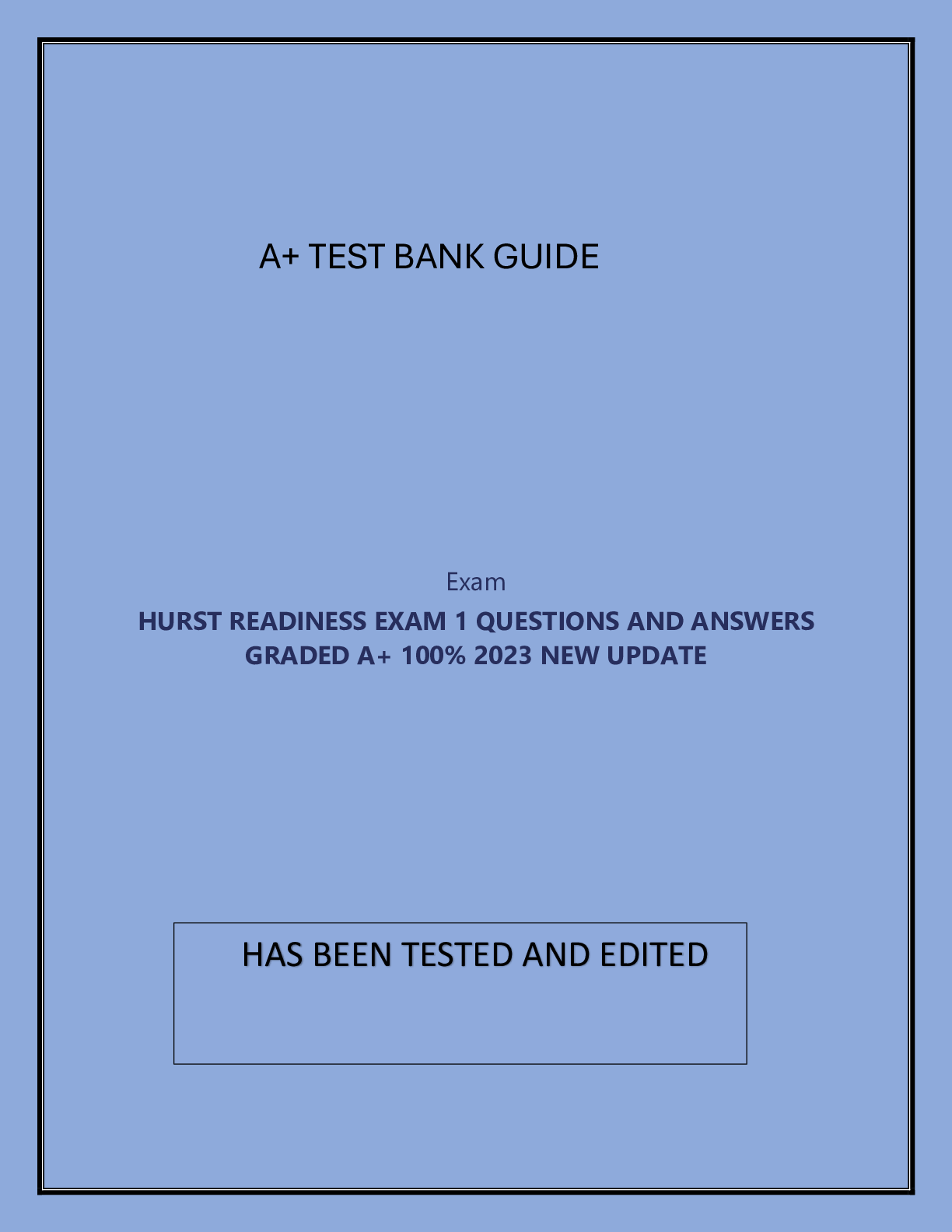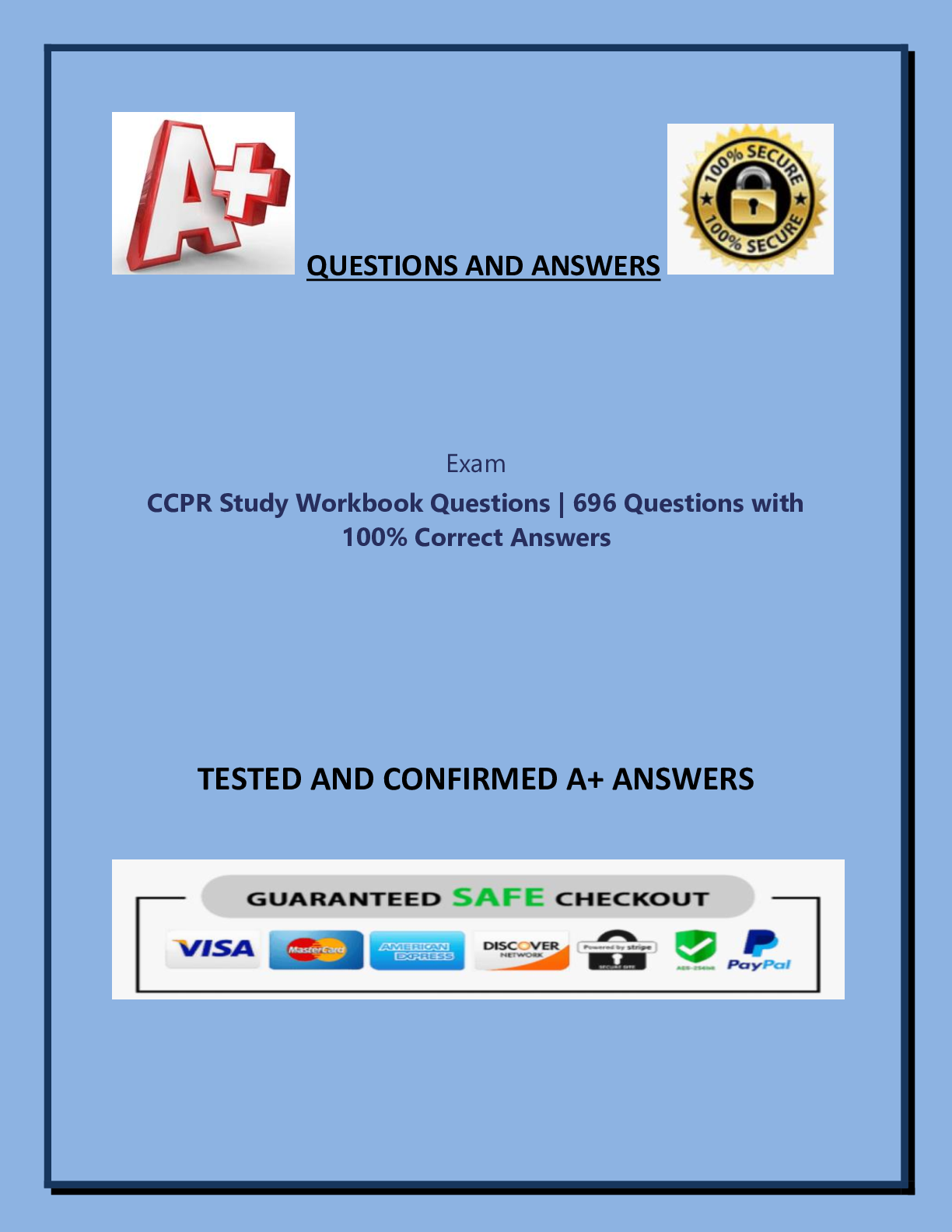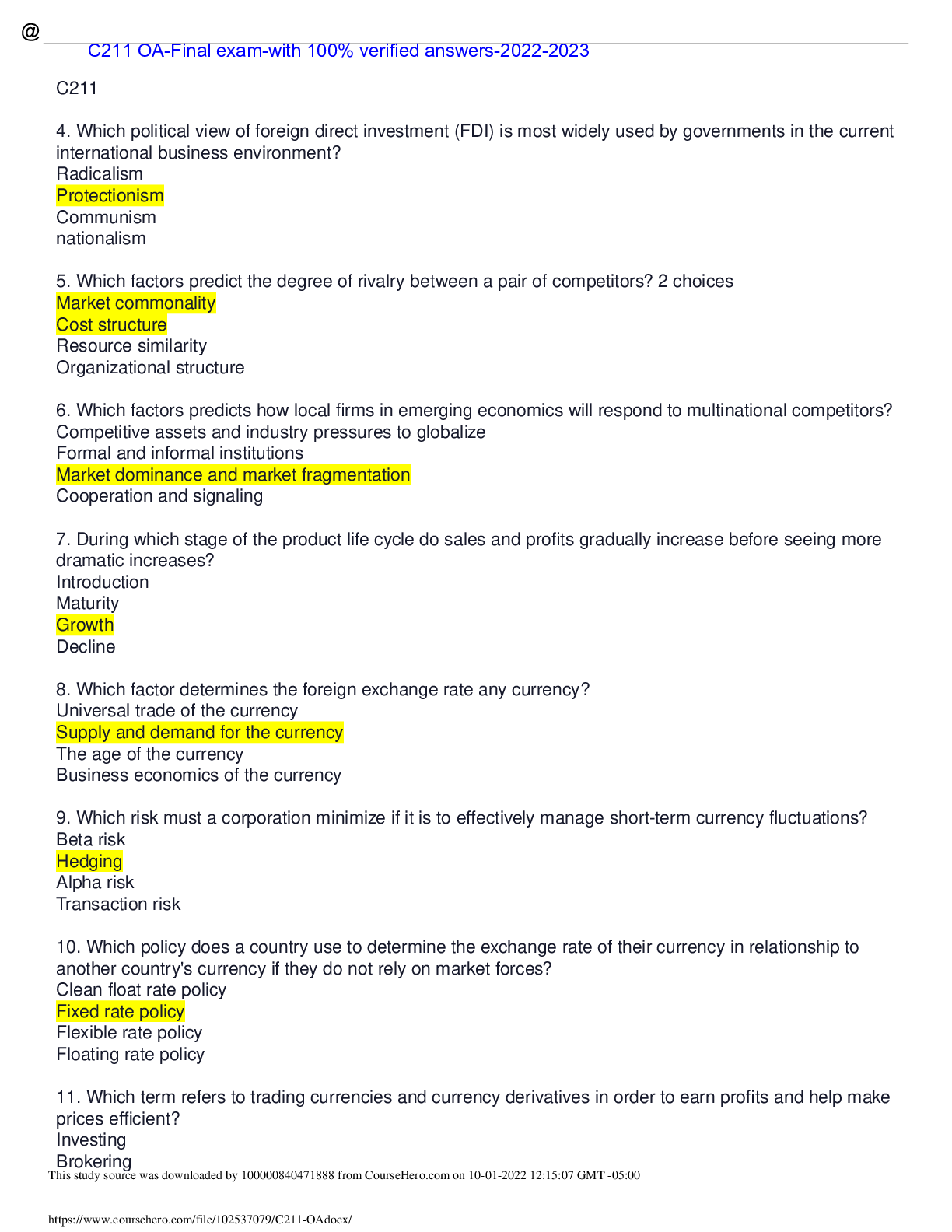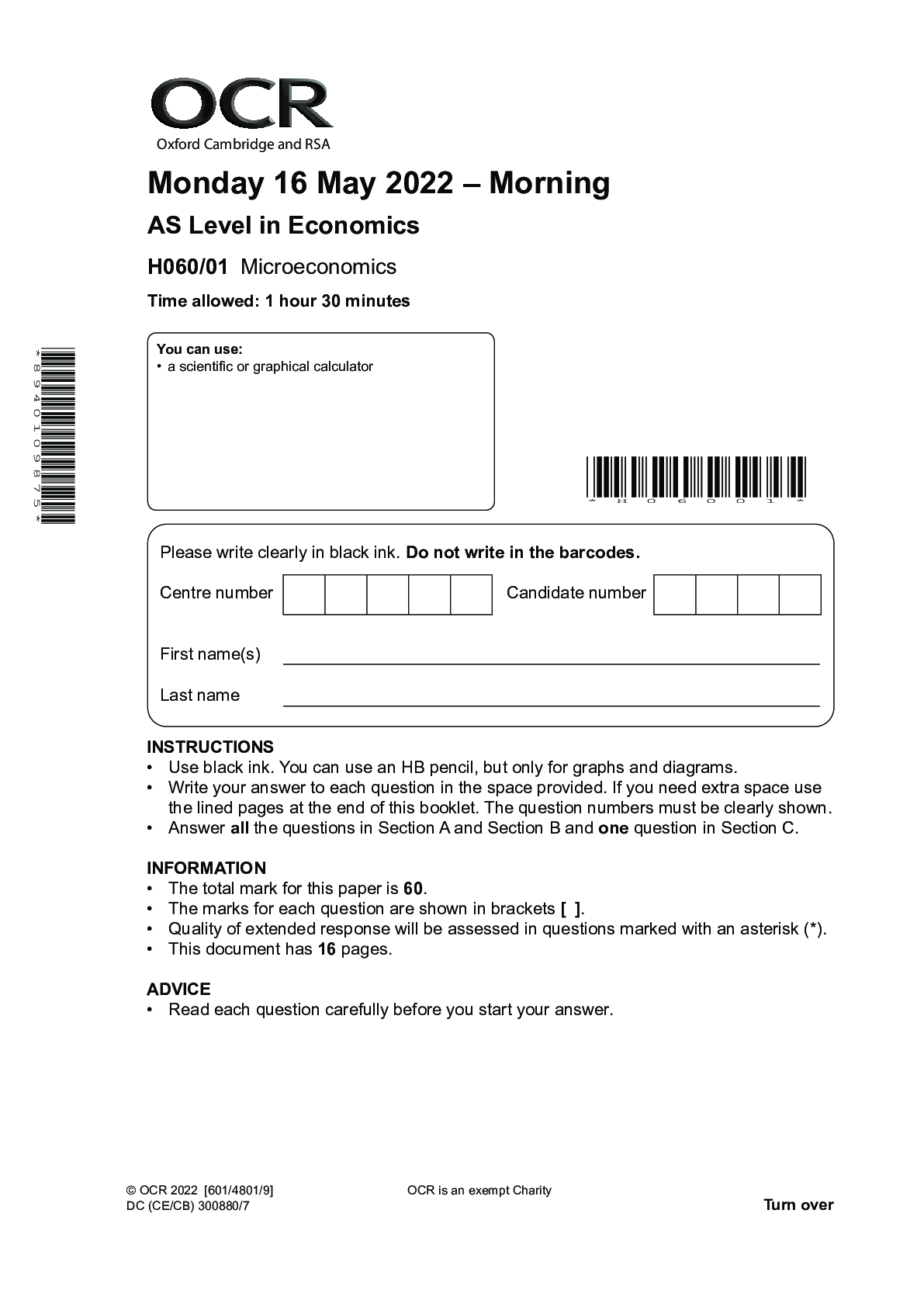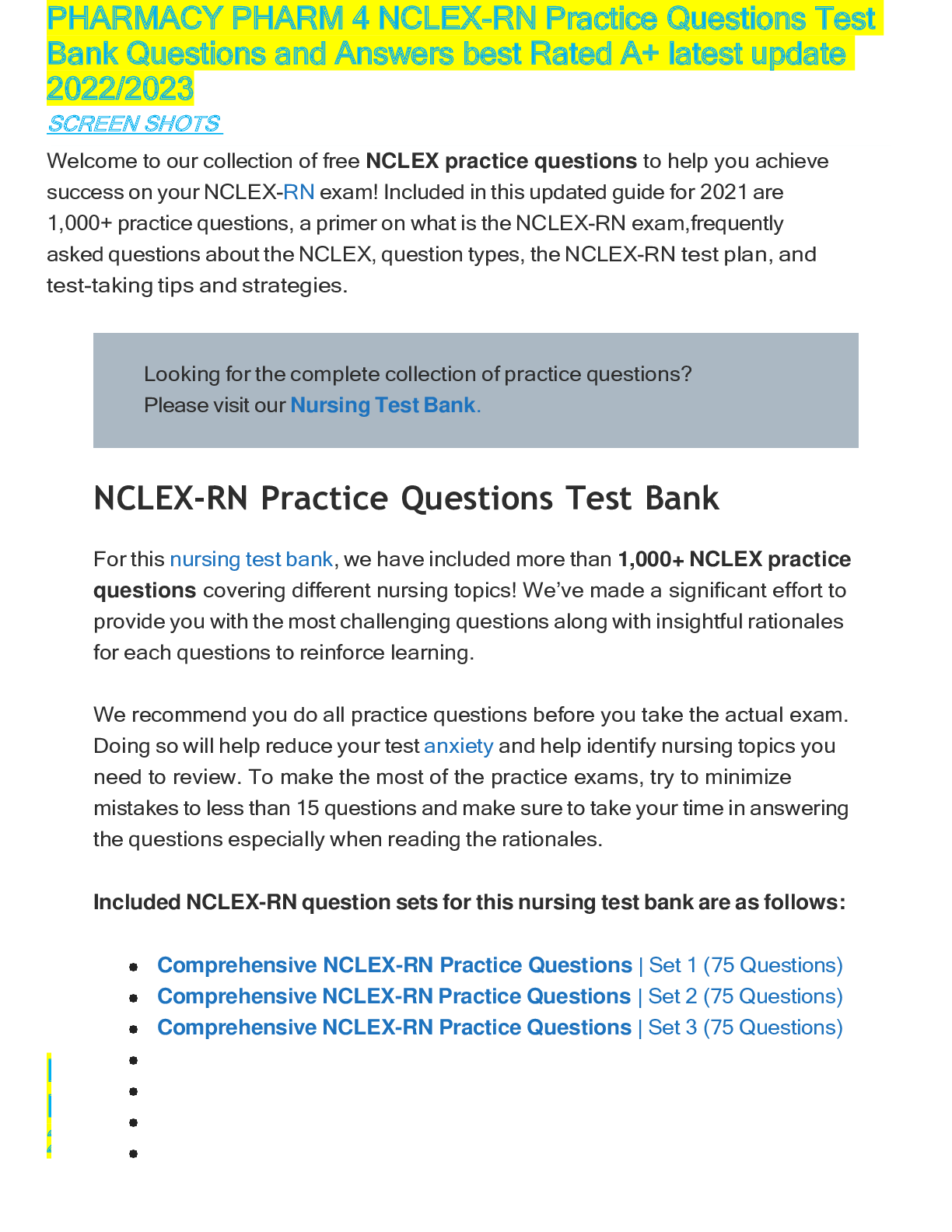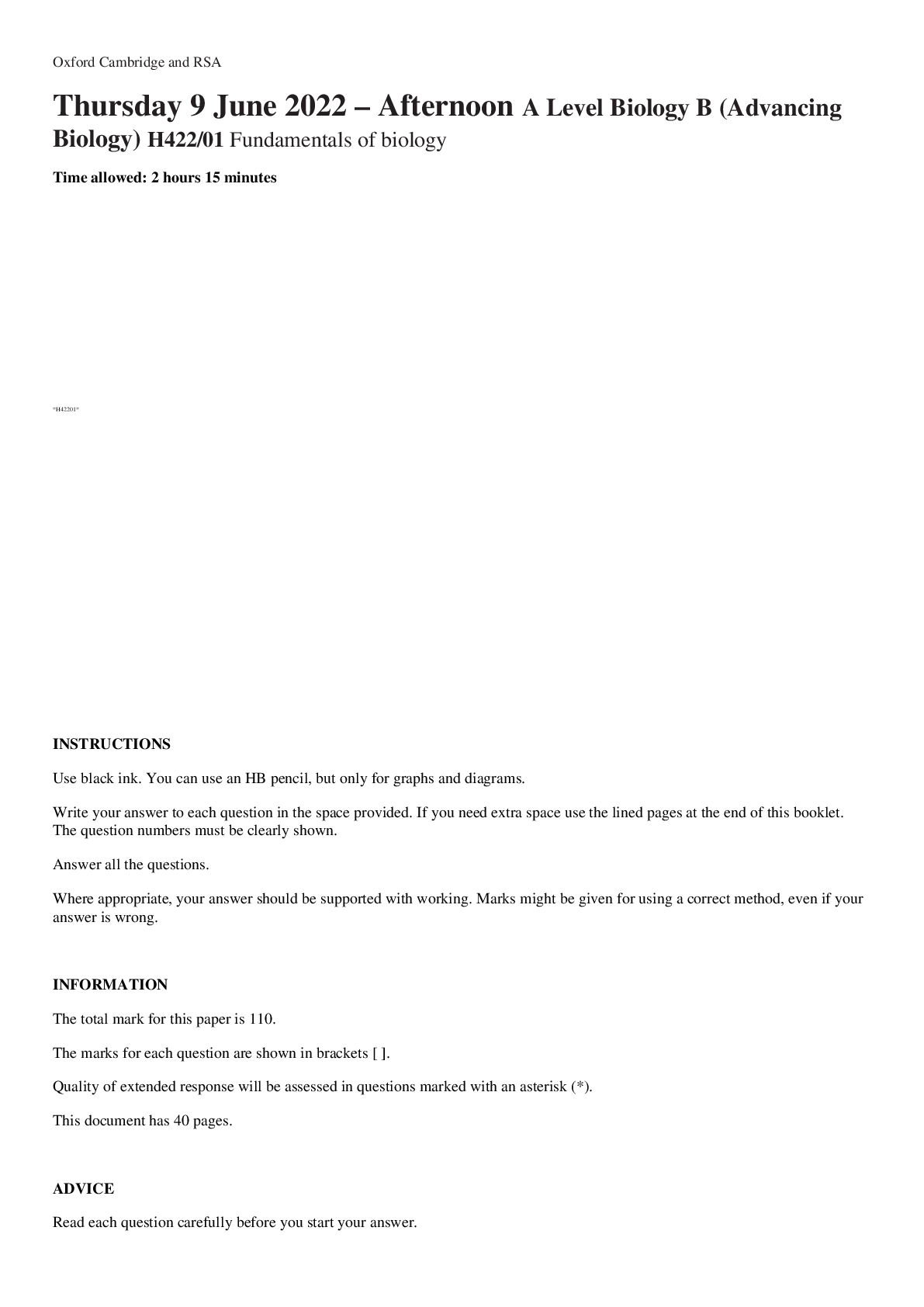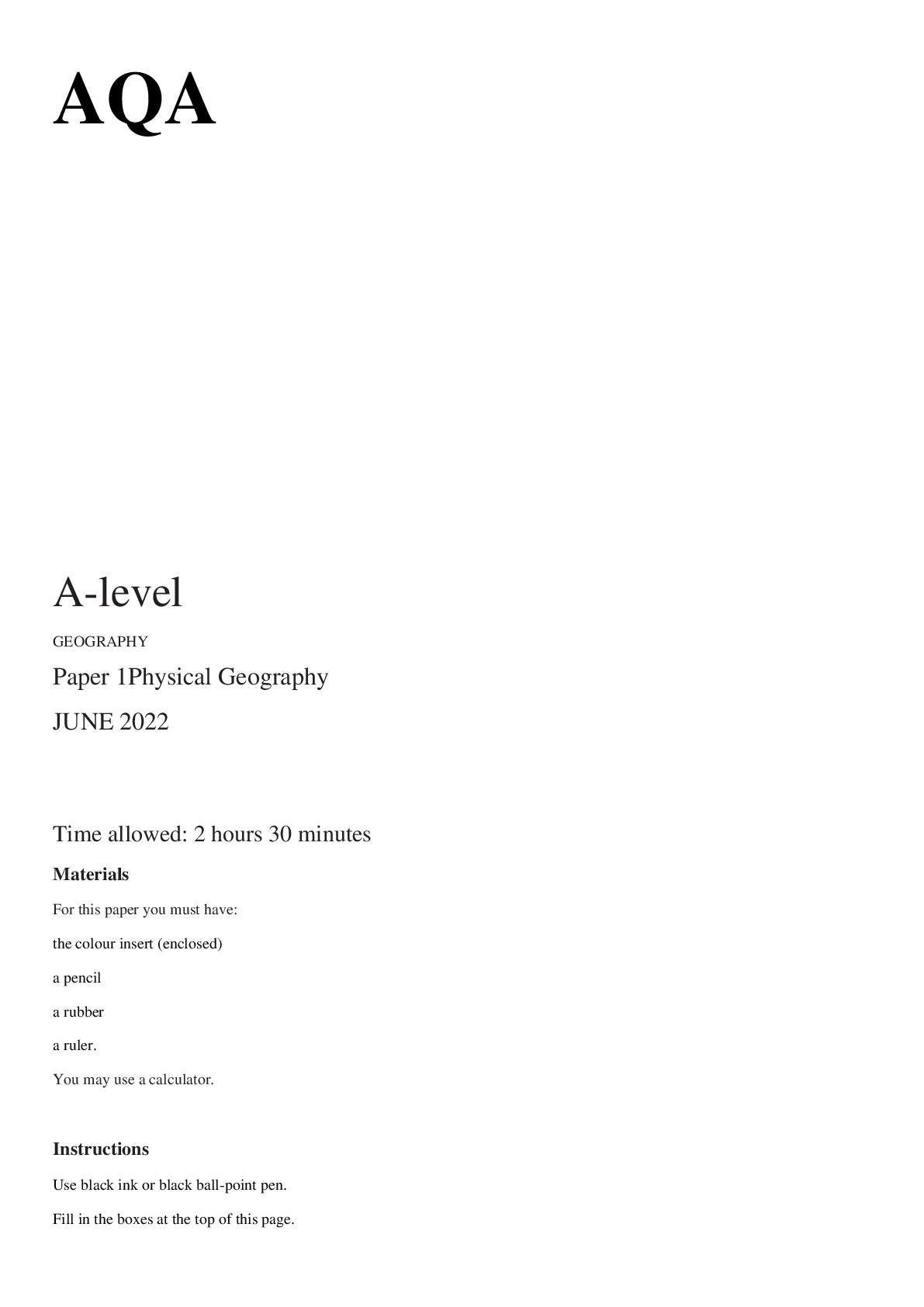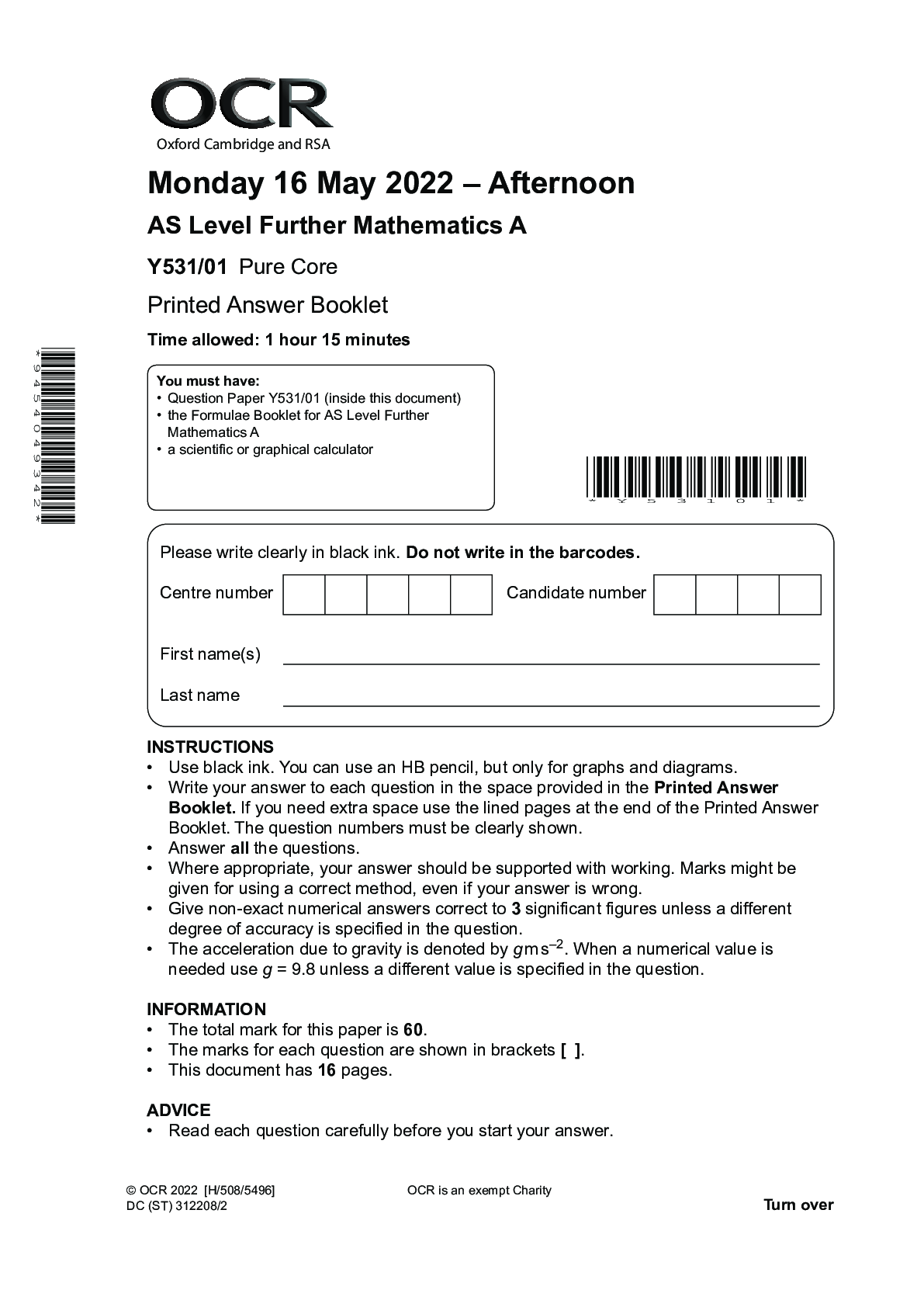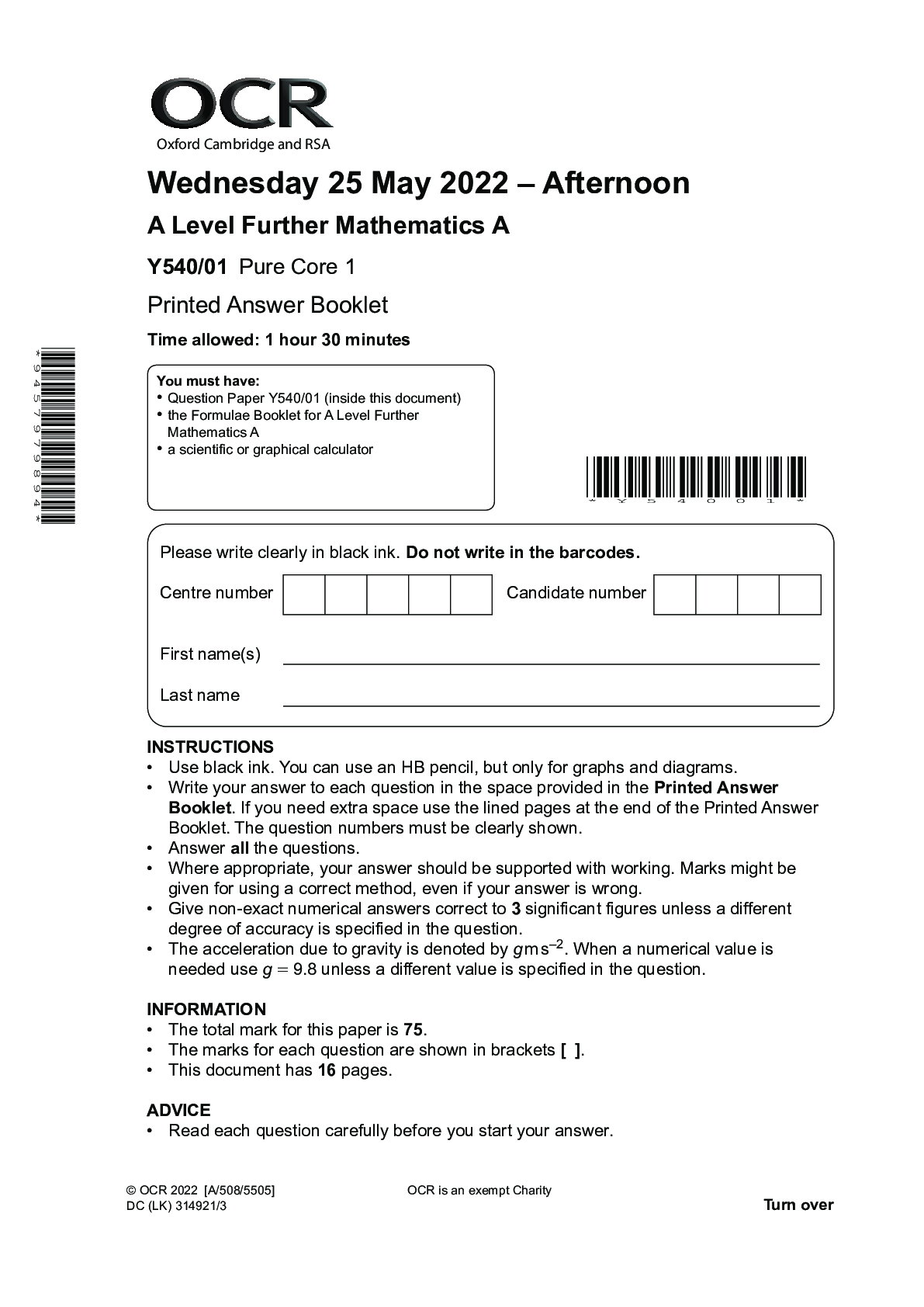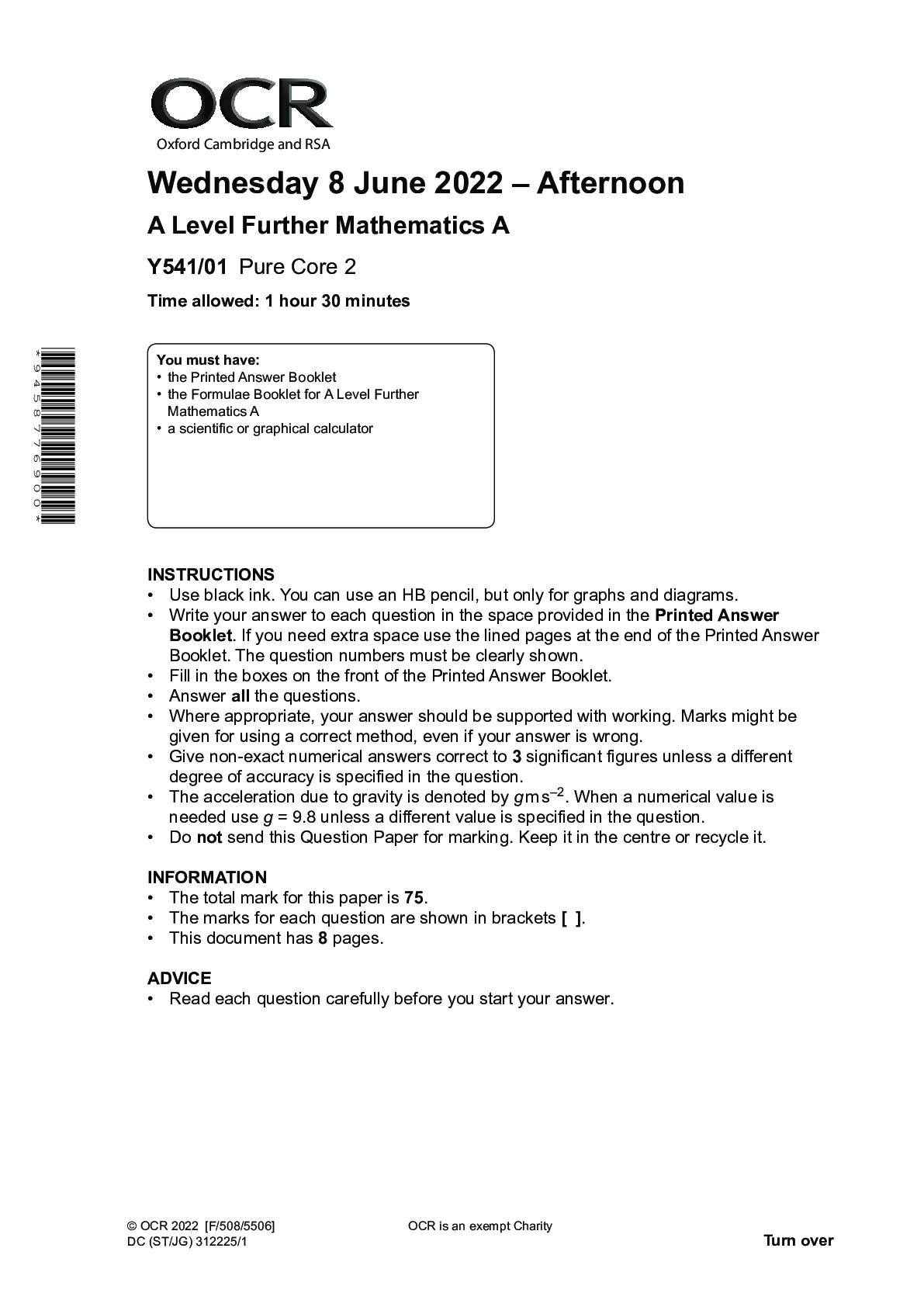*NURSING > A Level Question Paper > 266 hesi study - Medical surgical. (All)
266 hesi study - Medical surgical.
Document Content and Description Below
1. Identify (3) priority nursing diagnoses from the scenario overview. *Note: Please use the format on the attached page and complete one of your listed diagnoses in full including goals, outcome cr... iteria, interventions, rationale, etc.* • Acute pain related to imbalance between myocardial, oxygen supply and demand evidenced by patient complaints of chest discomfort. • Imbalanced nutrition more than body requirements related to food intake evidenced by HDL level 32, BMI of 30, and uncontrolled glucose level of 246. • Deficient knowledge related to lack of information to lower risk of cardiac disease evidendenced by lifestyle habits of smoking 2 packs of cigarettes a day and consumption of a high fat diet. Identify the (3) top nursing assessments for this patient. • Family history of hyperlipidemia • Nutrition-High fat diet and sedentary lifestyle, smoking 2 packs of cigarettes a day. If you need a professional to complete your college homework at a small fee, then reach out to amazingclasshelp.com • Monitoring vital signs such as Pain, ECG, blood pressure, respirations, and heart rate. Identify (2 - 3) priority orders for this patient. • HCP prescribes lovastatin to help control cholesterol. • After interpreting ECG, the HCP diagnosed the patient with stable angina and prescribed nitroglycerin 2. Students treat the case study as your clinical patient for the day and answer the following questions: a. What is the pathophysiology of the patient’s diagnosis & current treatment recommendations? Pathophysiology: Harding et al (2020) describes coronary artery disease as a disease that progresses in three stages over the years that the patient is suffering the disorder. The first stage is fatty streak, where yellow traced streaks of fat begin to appear and develop within smooth muscle cells. These fatty streaks can be seen in an individual's coronary arteries as young as 20 years old, which increases on the surface areas of the coronary arteries as the patient ages. The second stage is fibrous plaque, which starts the progressive changes on the endothelium of arterial wall. These progressive changes will start to appear at 30-years-old and increase with age. The endothelium is unable to repair itself; the arterial wall is thickened by LDLs and platelets’ growth factors. Plaque begins to form on the artery due transport of cholesterol, narrows the vessel lumen and reduces blood flow to the distal tissues. The third and final stage is called complicated lesion, where the arthosclerotic lesion begins to develop. As the fibrous plaque begins with growing, inflammation can cause the plaque to become unstable, development of ulcers, and rupturing. Once the arterial wall is compromised, a thrombus develops and binds to the wall, which leads to an occlusion of the artery. The thrombus becomes enlarged as many platelets begin to aggregate and adhere onto the thrombus. [Show More]
Last updated: 1 month ago
Preview 1 out of 9 pages

Reviews( 0 )
Document information
Connected school, study & course
About the document
Uploaded On
Mar 28, 2024
Number of pages
9
Written in
Additional information
This document has been written for:
Uploaded
Mar 28, 2024
Downloads
0
Views
8

